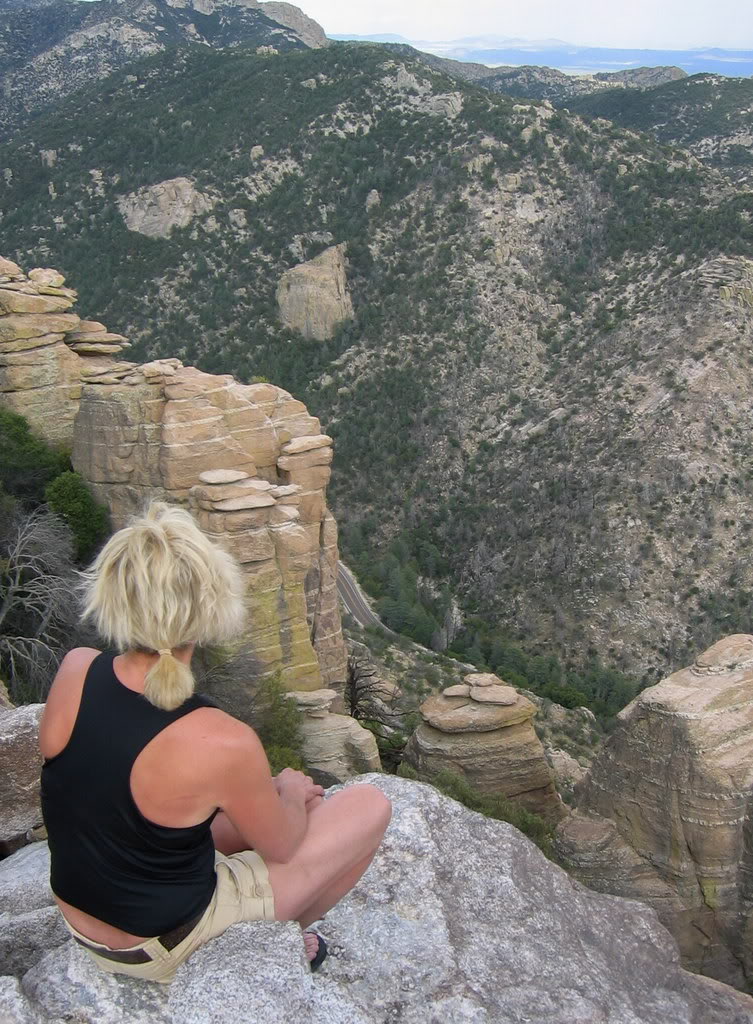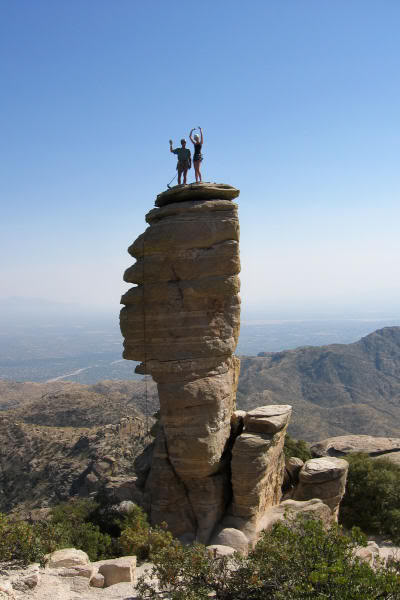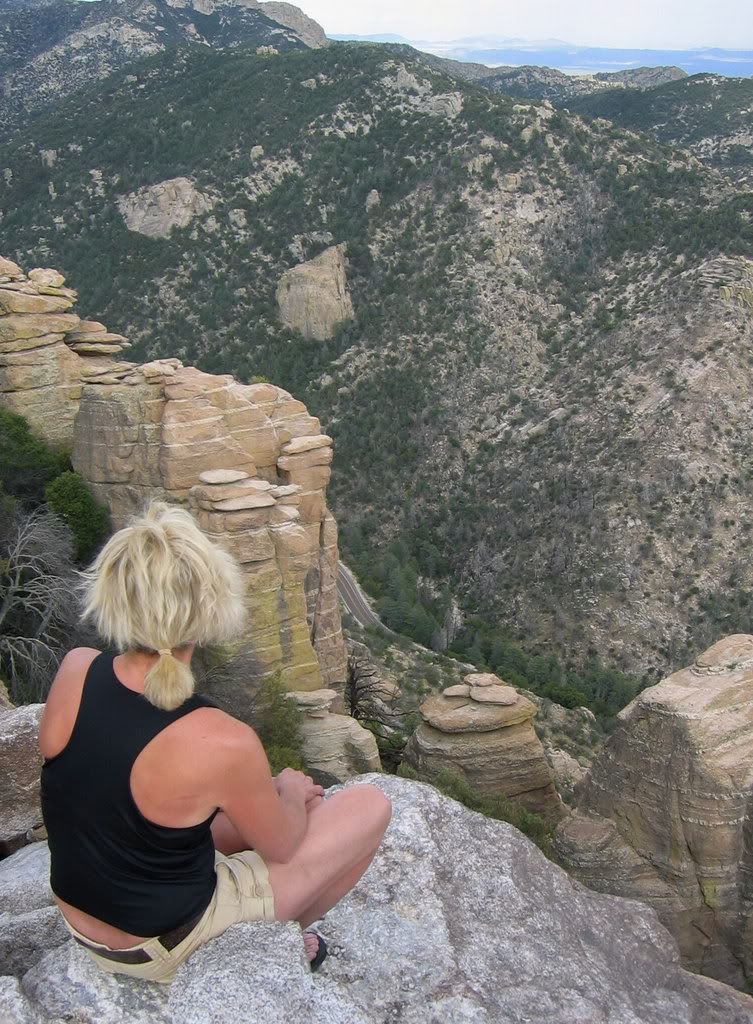By Mary Fairchild
 (Mt. Lemmon, Tuscon, Arizona. Flickr Pictures.)
(Mt. Lemmon, Tuscon, Arizona. Flickr Pictures.)
Our country has beautiful national forests and parks to explore. Many of us enjoy exploring them. At one time, the undeveloped areas required no money to enter, and developed facilities were basic but affordable.
“The Forest Service will be allowing private companies to sell us access to our own investments.”
Until 1997, it was government policy that the public lands were equally available to all, with modest fees for only a few highly developed sites as well as for entrance to national parks. Public lands were one of the benefits we enjoyed as citizens and supported with our tax dollars.
“If tax funding is replaced with fees the government is able to flatten corporate and private income taxes, transferring the cost of government to working class Americans.”
Since then there has been a systematic policy shift. Even though the Forest Service’s tax-supported funding has been increasing for more than a decade, access fees of all kinds have proliferated, and public lands are now expected to pay their own way.
As the Forest Service’s concessionaire program has expanded over the past 30 years, it has become dominated by large corporations. Camping fees have increased and concessionaires charge fees the Forest Service itself is prohibited from charging, such as for parking.
“Disney and others will be the ones who will build the amenities on public lands to service not just RVers but the tourists who will drive these newly paved roads to the newly built attractions. The Forest Service will get all this for no cash expenditure of its own. On the contrary, in exchange for providing the business opportunity, proving a long term lease for the lands–and constructing the roads at taxpayer expense–they will get their small piece of the action, just like they do with the ski resorts.” Alasdair Coyne
Public campgrounds have been put in direct competition with the private ones. As the Forest Service started to use concessionaires to manage campgrounds they have become overdeveloped at the taxpayer’s expense. This was expected to attract the motorhomes that would use the majority of improvements that have been made–electric hookup, sewer, cable, etc, which were done with appropriated funding in order to attract a private concessionaire who would then operate the facility for profit without having had to invest their own capital.
Rather than fancy accommodations, the Forest Service should have aligned the available funding that the public expects at Forest Service campgrounds–modest modest fees and basic facilities. Those who want more would turn to the private sector.
For 14 years the Forest Service has justified day use fees by promising that the money will be spent on site to improve the facility that was used. Under the proposed new policy, day use revenue collected at concessionaire-managed sites would stay with the concessionaire to spend wherever and however they like. It completely pulls the rug out from under the main reason cited by those who support day use fees.
Public/Private partnerships are government-sanctioned monopolies in which a few businesses are granted special favors like tax breaks, the power of eminent domain, non-compete clauses and specific guarantees for return on their investments. That means they can charge what they want and they can use the power of government to put competition out of business.
“In Texas, using eminent domain, Public/Private partnerships attempted to take more than 580,000 acres of private land–sanctioned by the partnership with the Texas government to build the TransTexasCorridor. “
Appropriations for Forest Service recreation have gone up substantially over the past decade, well ahead of inflation. Year after year Congress appropriates more money than the Administration requests. That was true under Bush and it’s true so far under Obama. You used to hear the Forest Service annually but they were talking about what the President requested, not what Congress actually gave them.
In the middle of the Clinton era, the Forest Service projected dramatic increases in outdoor recreation. This fed into assertions of some environmental groups, who argued “pay to play” would demonstrate the desirability of adopting policies favoring recreation over resource extraction. Under the Bush administration, however, the same US Forest Service claimed only about a quarter of projected recreation actually occurred.
Both Democrats and Republicans conspired to change things in 1996 . Advocates of Fee Demo insisted fees would supplement appropriations and the result would be substantial improvement in outdoor recreation serviced, leading to more support for fees. In reality, federal land funding has decreased and recreation infrastructure is degrading.
Rather than improving our public lands, fees have existed to serve political agendas harmful to natural resource conservation and responsible use. If tax funding is replaced with fees the government is able to flatten corporate and private income taxes, transferring the cost of government to working class Americans. Federal land agencies lack funding because current leaders would rather provide tax breaks to corporations and the wealthy and direct subsidies to powerful special interests.
American Recreation Coalition: Recognizing that outdoor recreation could become a “packageable good,” more than 100 private sector organizations came together to form the American Recreation Coalition in 1979. The American Recreation Coalition is a Washington-based non-profit organization that formed in 1979. The program was imposed upon the American public in collaboration between ARC, the U.S. Department of Agriculture Forest Service Officials, and a group of corporate-financed congressional leaders. ARC testimony to Congress speaks of arranging “for top marketing and communications executives from Disney, REI and other companies to work with the Enterprise Forest fee team in the design and implementation of that project.” (The Enterprise Forest is U.S. Forest Service marketing-speak for the four Southern California national forests that are included in the Adventure Pass program.) REI story here.
The “user fee” initiative affects four federal agencies:
The United States Forest Service, which oversees 192 million acres.
The Bureau of Land Management, 264 million acres.
The U.S. Fish and Wildlife Service, 92 million acres.
The National Park Service, 83 million acres.
Idaho: Rich Vaughn says paying the U.S. Forest Service a daily fee so he can take his boat onto the Salmon River in Idaho, where he used to play for free, hurts his sense of fairness more than it hurts his wallet. “It’s public land that’s held in trust for the American people, and to charge a fee to access that land is wrong,” Vaughn said.
Some state legislatures (Colorado, Montana, California, Oregon, Idaho, New Hampshire) have adopted resolutions opposing user fees.
Colorado: Colorado’s resolution says the recreation fees amount to double taxation, because Americans already pay taxes to support public lands. The fees “bear no relationship to the actual costs of recreation such as hiking, picnicking, observing wildlife or scenic driving,” the resolution says, and they contradict “the idea that public lands … are places where everyone is granted access and is welcome.
Tuscon: “…one plaintiff… said, ‘It’s a stretch by bureaucrats’ to extend that to parking and the use of undeveloped areas…it’s clear that Congress never intended for extra fees to be imposed on citizens for that… The ruling, unless overturned, is a victory for several individuals who hike in the mountains who sued on behalf of other users. It overturns a ruling two years ago by a trial judge that the Forest Service was within its rights to charge $5 a day or $20 a year to those who park along the 28-mile Mount Lemmon Highway. Arizona Daily Star 2/10/12

Mount Lemmon is in the Santa Catalina Mountains located in the Coronado National Forest north of Tucson. That’s my daughter with climbing guide Jeff Fassett on “Hitchcock Pinnacle.” Hitchcock Pinnacle is named after Frank Harris Hitchcock who was a the local newspaper editor who inspired the construction of Hitchcock Highway. This area is called “Windy Point” and it was built by the Federal Bureau of Prisons, using a large number of prisoners over a period of 18 years, and is a popular place for outdoor weddings (Squeezing the Lemmon). The Saguaro National Park(east) is nearby. The west park is on the other side of Tucson about 30 miles away. 91,327 acres of landscape and life of the Sonora Desert are preserved here.
Payson Ranger District of Arizona’s Tonto National Forest: The Forest Service will be allowing private companies to sell us access to our own investments. The Tonto National Forest is attempting to do all this at the Payson District’s picnic areas, trailheads and a prehistoric Native American village, even though four of the picnic sites were improved in 2010 with taxpayer dollars. A law called the Federal Lands Recreation Enhancement Act was enacted to set limits on recreation fees, but today the agency is setting these limits aside when it surrenders lands to a concessionaire’s private control. The Enhancement Act also requires that any proposed new fee sites must undergo a robust and transparent public process, with final review by a citizen advisory committee. But because it doesn’t get the needed public support, land managers are choosing to hand over previously free recreation sites to a concessionaire and declare the process exempt from the law. High Country News 4/29/11
Fees exist because special interests have asked politicians for them and the public hasn’t resisted them. Some places are beginning to advertise that user fees do not apply in their area.
Georgia: Effective January 1, 2012, a Georgia Outdoor Recreational Pass . The new access pass provides for users including hikers, birders, cyclists and horse-riders to help cover maintenance at designated WMAs, PFAs and Natural Areas. That work has been funded mostly by hunters and anglers. The 31 affected properties are Wildlife Management Areas (WMAs) and Public Fishing Areas (PFAs). Each is managed for wildlife/fish habitat and development and funded mostly by revenue from hunting and fishing licenses. Other uses, such as hiking, cycling, caving, bird watching and many other such activities, are also allowed. A GORP is not the same as a ParkPass (required for Georgia State Parks locations).
Denver: Pay-to-Play fees by Forest Service for peak hikers. Denver Post, 5/16/10.
Chicago: Former Chicago Inspector General David Hoffman has demanded that current Inspector General Joe Ferguson be empowered to investigate the Trust that will decide what projects to fund and what user fees to impose to guarantee five financing giants receive a sufficient return on their investment. There are serious questions about how Emanuel will be able to use this scheme to raise money to construct schools, pave streets, or build without creating new user fees… During a brief public comment session, a community activist raised the possibility of using the Trust to finance the $300 million renovation of Wrigley Field. Although Wrigley is privately owned by the Ricketts family that owns the Cubs, the state could acquire it, as Tribune Co. Chairman Sam Zell once proposed.
“Mr. Emanuel’s hurry-up plan to rebuild the underbelly of the city through a $7 billion fund… is about as transparent as one Mr. Daley’s tax-increment financing schemes–which is to say not at all. Where is the evidence that this public-private creation actually will benefit the city and taxpayers? …Perhaps more important, where is the outside supervision?” Crain’s Chicago Business
Texas: In Texas, using eminent domain, Public/Private partnerships attempted to take more than 580,000 acres of private land–sanctioned by the partnership with the Texas government to build the TransTexasCorridor. Citizens united in Texas to expose the problems of Public/Private partnerships. “Highway tolls are yet another form of regressive taxation, designed to push the burden of public costs downward onto the average taxpayer/driver, while the lion’s share of the benefits go to the industries demanding state-subsidized mobility and infrastructure.” Corridorwatch
References/Related
- Redeveloping Chicago
- Flickr Pictures
- Willow Creek/Politics
- Privatization Threatens an American National Forest, by Kitty Benzar, 4/29/11, High Country News.
- Fee Fighters Blast the Adventure Pass, by Juniper Davis, 6/7/99, High Country News. National Forest Adventure Pass, Wikipedia.
- Forest Service to Drop Fees at Most National Forests, by Bettina Boxall, Los Angeles Times; 2/9/12.
- Mayor’s Plan to Beautify Chicago Growing From A Joke Into Reality, Slevin & Lydersen; The Washington Post; 8/11/06.
- Lake Michigan Water Trail to be Dedicated as National Recreation Trail, Kurt Repanshek, 5/28/11, National Parks Traveler.
- Ex-Watchdog Doesn’t Trust the Trust, Fran Spielman; 8/3/12, Chicago Sun Times.
- Corporate Interests are the Force Behind the Adventure Pass Program: The Commercialization of American’s Public Lands Los Angeles Times; Alasdair Coyne, 8/29/99.
- Governor Quinn Announces Millennium Reserve Initiative in Calumet Region of Chicago–Largest Project of its kind…, Illinios Government News Network, 12/9/11.
- Obama Launches America’s Great Outdoors Conservation Initiative, Juliet Eilperin & Scott Wilson; 4/17/10, Washington Post.
- $7 Billion Public-Private Plan in Chicago Aims to Fix Transit, Schools, and Parks, John Schwartz, 3/29/12; New York Times.
- Rio+20 Earth Summit: The End of International Environmentalism, Ronald Bailey; 6/26/12.
- Millennium Reserve Vision Project Morphs Into Calumet Reserve Project, includes video presentation by IDNR Kevin P. Murphy; 10/19/11.
- FBI Cheif Going to Disneyland, Stefano Espesito; 7/31/12; Chicago Sun Times.
- Purcell Trench Manufacturing Company ; Wilderness; Camping Manifesto; Kill the RAT; 1/21/2012.


1 thought on “Forest Service and Public/Private Partnerships: Selling us Access to Our Own Investments”